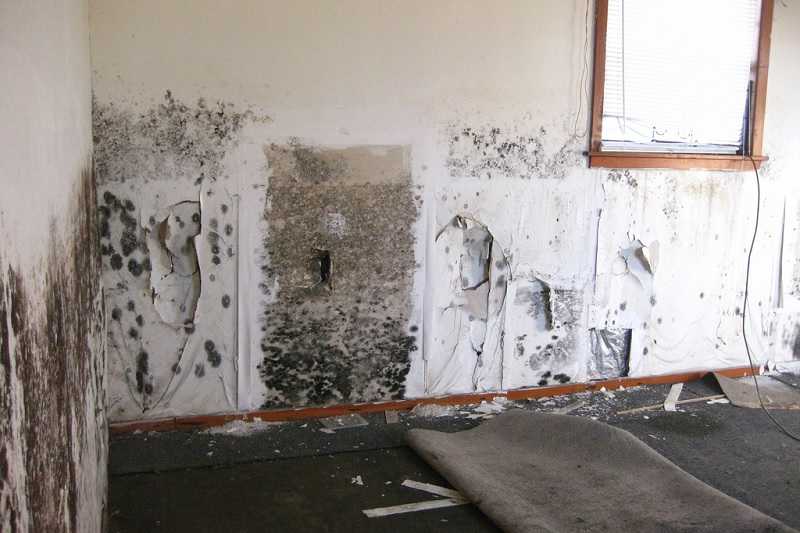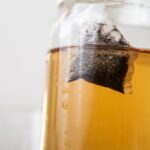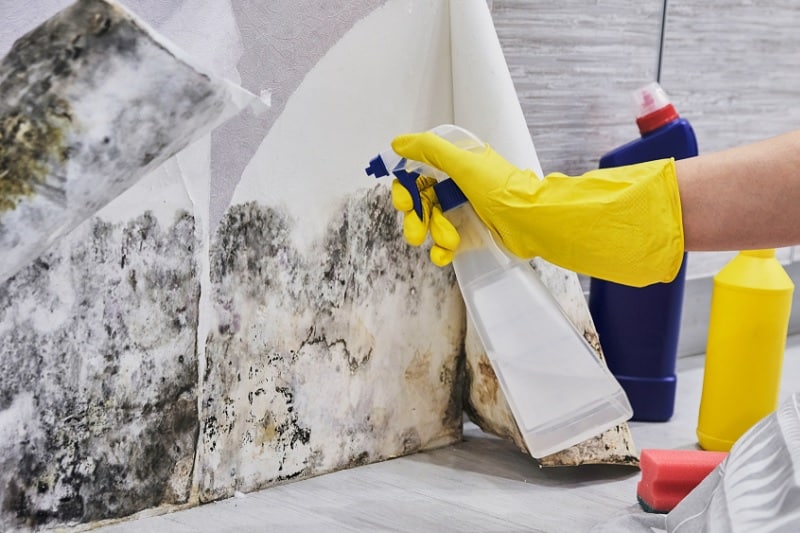Mould on walls is not only unsightly, it is also bad for your health if left untreated. Sometimes, mould can be an indication there is a huge problem in your home, like water leaks.
Mould results from condensation, where warm moist air comes into contact with cool surfaces and then the moisture condenses into it. It can be caused by high humidity levels.
Mould is mainly found on surfaces like basements, exterior walls, bathrooms, and laundry rooms. Below is a step-by-step guide to cleaning mould off walls.
Step 1 – Prepare a Mould Removal Solution

You need to apply something to the mould in order to remove it. Here are a few options.
Bleach
Bleach kills mould and bacteria and is also a great cleaning agent. It sanitises the walls of your home, preventing mould from returning. When making the bleach solution, put on protective gear like masks and gloves.
You can make a solution of one cup of bleach per gallon of water. Bleach can cause skin irritation and also produces toxic fumes. Bleach is used as a stubborn mould remover.
Vinegar
Vinegar is a hundred percent natural and safe, unlike other mould removal solutions. Like bleach, it kills mould and bacteria, but only when used consistently in areas prone to mould buildup.
The big advantage of vinegar is that it doesn’t emit fumes or cause any irritation on the skin.
You can put the vinegar in a spray bottle (with no water mixed in it) and spray on to the affected areas. Let it sit for an hour, then use a cloth soaked in water to wipe away the mould.
Mould wash concentrate
This is a fungicidal treatment used for removing stubborn mould like black mould. It works on different surfaces like wood, tiles, and painted walls. This concentrate is as effective than bleach or vinegar.
When using a mould wash concentrate, you should remove any loose material from the surface, like flaking paint, and ensure the surface is smooth. Wash the area with diluted mould wash concentrate and sponge and allow the area to dry.
Mould remover
A number of specially formulated mould remover products are available in convenient spray bottle form – see our roundup of the best here.
Step 2 – Put On Some Protective Gear
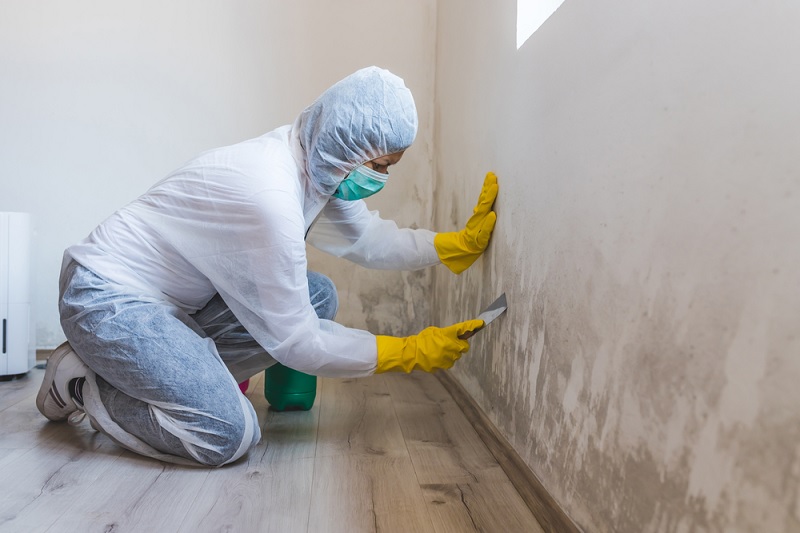
Mould can be bad for your health. It can cause respiratory problems and skin irritation. You should, therefore, wear a face mask to prevent breathing in mould spores.
Also, wear rubber gloves, trousers and a long-sleeved shirt that can be washed in hot water to eliminate the mould spores you might pick up. The gloves are so that you don’t come in contact with the toxic solutions or mould spores.
Step 3 – Prep the Area
Mould spores can easily pass through the air in your home. You can lock the door to the area you are working in or use a plastic sheet to block the area.
Remove all decorations or curtains near the area. If there’s heavy furniture, you can cover it with plastic wrap.
On the floor, put down some old towels. If the floor is carpeted, you can tape with plastic sheeting to prevent stains.
Step 4 – Remove the Mould
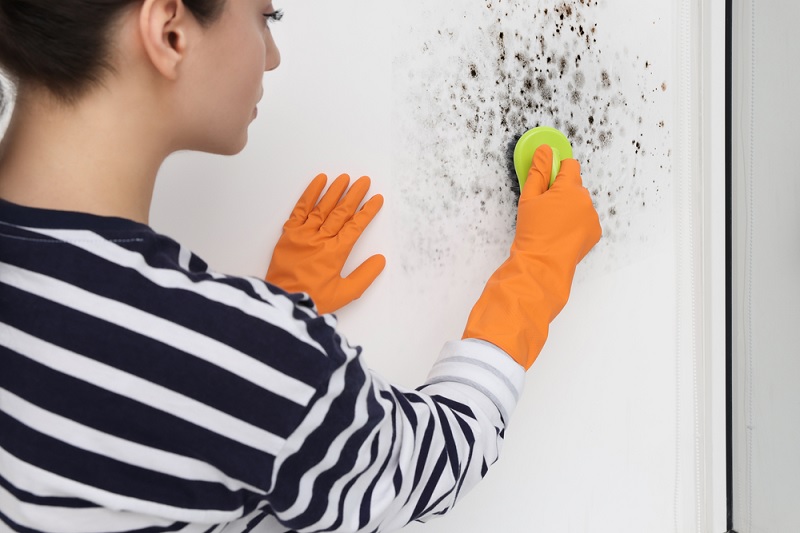
The method for doing this depends on what you are removing it from. See the tips below.
Painted walls or wallpaper
When removing mould from painted walls, you can use a natural mould remover spray (vinegar).
Spray the solution on the affected area and scrub with a brush or cloth to remove the mould.
Spray lightly again, only sufficiently to dampen the area. Wait ten minutes, then wipe with a clean cloth.
Do not rinse the area. Let the parts dry overnight.
Tiles, concrete, cement and stone
On these surfaces, you can apply a tough mould remover spray such as bleach.
However, you should wait at least 24 hours after using a natural mould remover spray before using something stronger. It is not safe to combine different mould remover solutions.
After 24 hours, apply the stubborn mould remover (bleach) and immediately clean the affected area with a cloth or brush.
Lightly reapply the spray and wait 15 minutes. Clean the affected area with a clean cloth dampened in water. Let the parts dry overnight.
Drywall
If you find mould growing on drywall, you can’t just clean it. The drywall surface is porous. This means that mould not only thrives on the surface but also makes its way into the drywall’s structure.
Use a stubborn mould remover and spray over the area till it’s damp.
Wait a few minutes, then reapply after the drywall has absorbed the spray.
Wait 15 minutes. Wet a clean cloth with the stubborn mould remover and wipe down the area.
While doing this, ensure your cloth is not touching any other surface because mould spores can spread.
Allow the place to dry overnight, and do not rinse the area. Also, don’t fan it to dry. The mould remover spray will continue killing mould as it dries.
If there’s any discolouration on your wall, apply an oil-based primer. When the primer is completely dry, apply your preferred paint.
More Mould Removal Tips
To ensure maximum safety and to get the best results, make sure you
- Keep children and pets out of reach of the cleaning products or during the removal process.
- Ensure the area is well ventilated.
- Wear protective gear.
- Never mix bleach with ammonia. The result is a highly toxic vapour.
If the mould in your home results from extensive water damage to your home, contact a professional instead. The mould in your home might be a toxic black mould that needs professional treatment.
In cases where the mould persists no matter what you do, professional mould removal services might help.
Other circumstances where you need professional help include:
- If mould spreads over large areas like over 10 square feet
- When it grows in places difficult to reach
- When it affects household materials that cannot be easily cleaned
Using professional help can save you time and is quick and efficient. However, you can use the above steps to clean mould off your walls in case it’s manageable.

In The Wash is your guide to the best laundry and cleaning products, tips and tricks. Our mission is to solve the UK’s cleaning and laundry dilemmas!
